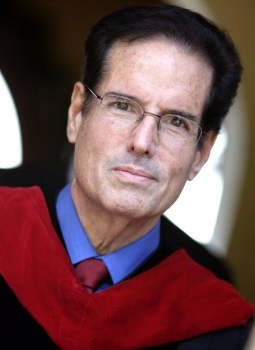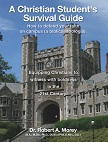Buddhism Unmasked
By Dr. Robert A. Morey
Introduction
Buddhism is an Eastern religion that has gained many followers in the West especially among movie stars. It is only appropriate that we examine this ancient pagan religion.
The Buddha
Buddhism is supposedly built upon the teachings and example of a Hindu guru who was called the “Buddha,” i.e. Enlightened One. The problem we face is that this guru did not write down any of his teachings. Neither did any of his early disciples. A few manuscripts appear four to five hundred years after his death! But most of the manuscripts do not appear until nearly 1,000 years after his death. This gives plenty of time for legends and myths to arise that falsify the life and teachings of the guru.
This problem is further complicated by the development of two contradictory literary traditions: Pali and Sanskrit. These divergent literary traditions produced hundreds of Buddhist sects that disagree with each other on many major points.
No Primary Sources
Because the lack of primary source materials for the history of Buddhism, modern scholars seriously doubt the reliability of the traditional legends about the Buddha. As a
matter of fact, if he were alive today he would not recognize the religion that bears his
name! Since Buddhists themselves disagree on the “facts” of the life and teachings of their guru, there is more than adequate reason to cast doubt on the entire history of the “Buddha.”
What We Know
There are only a few facts about this Hindu guru that are agreed upon by most scholars. He was born around 563 B.C. in what is now called Nepal. His name is not known for certain. The ones that history preserved are spelled differently. One variation is Siddhartha Gautama. Although this name is doubted by many scholars, we will use it for lack of a better alternative.
It is universally agreed that Siddhartha did not intend to start a new religion. He was born a Hindu. He lived as a Hindu. And he died a Hindu in 483 B.C. The myths and legends that gradually built up around him over the centuries are no safe guide to what he really believed or practiced.
As Buddhism evolved over the centuries, many different authors from varying cultures set forth their own ideas in the name of the Buddha. As a result, Buddhism developed inherent contradictions. When this was realized, Buddhism embraced these contradictions as a badge of honor. Thus the making of self-contradictory statements
has become one of the pronounced features of Zen and other esoteric forms of
Buddhism.
The Myths
The many conflicting and fascination legends about his early life, marriage, wanderings and enlightenment are unreliable. Siddhartha was supposedly born into a wealthy family and grew up isolated from the poverty and suffering in the surrounding culture. Some legends exaggerate the wealth of his family and even make them into royalty. But these legends are obvious embellishments and there is no historical evidence to back them up.
He was married and had on infant child by the age of 29. Disobeying his father’s wishes, he went out into the world and for the first time saw the pain and suffering of the unwashed poor and the untouchable. Their suffering made him feel guilty over his life of ease and luxury.
As he became psychologically obsessed with guilt, instead of doing something positive to alleviate human suffering, like setting up a hospital or giving food to the hungry, Siddhartha decided to increase human suffering by abandoning his family and taking up the life of a Hindu beggar/monk. By making his family suffer as well as himself, he only added to human suffering. This is one of the great defects of both Hinduism and Buddhism. They increase human suffering with their belief systems.
For six years Siddhartha wandered around the countryside begging and abusing his body in the attempt to purify his soul. But his suffering did not profit anything for anyone including himself. The legends state that he was sitting under a fig tree when it dawned on him that the source of all his suffering was his failure to find a Middle Way between pleasure and pain, wealth and poverty, etc. He had gone from one extreme to another and both experiences had left him dissatisfied with life.
Then a new idea came into his mind. His real problem was that he had DESIRES.
When his desires were not met, he became dissatisfied. Thus the way to avoid frustration and the suffering it caused, is to arrive at the place where he had no desires for anything, good or evil. For example, he should have no desire to see his wife or child or to help the poor and needy. Desire qua desire must be eradicated.
With these insights (sic), Siddhartha was proclaimed a “Buddha,” i.e. and Enlightened
One. Did this mean he went back to his family and fulfilled his moral obligation to his wife and child? No, his wife and child remained abandoned. Siddhartha’s so-called “enlightenment” was intensely self-centered and inherently selfish. This is still one of the main problems of Buddhism.
Now that he was a “Buddha,” he should not have any desires to be or do anything. We would therefore expect him to withdraw to a cave and die in isolation. But his desire to preach sermons and make converts was apparently alive and well. He set forth preaching his new message to all who would hear him.
According to the legends, from his enlightened lips came the four Noble Truths, the Eightfold Path, the Ten Perfections, and many other sophisticated teachings. But Siddhartha never really taught any of these things. They were developed many centuries after his death and his name was invoked in order to give them the air of authority.
No God
Siddhartha never taught that he was a god or that he should be worshipped as a god. He did not even claim to be a saint or an avatar. As a Hindu, he believed in millions of finite gods and goddesses. But being finite deities, they were of little consequence and could be ignored except when you needed their assistance. Thus most Buddhists call upon the gods only when they need something.
The Evolution of Buddhism
The starting point for any analysis of Buddhism is Hinduism. Scholars have long pointed out that Buddhism was intended to be a reform movement within Hinduism, not a separate religion. Indeed, much of Buddhism is a reaction to be the sociological evils spawned by the Hindu commitment to such things as the caste system with its millions of untouchables. The following charts summarize the unity and diversity between Hinduism and Buddhism.
Unity |
|
Hinduism |
Buddhism |
1. human autonomy |
|
Diversity |
|
Hinduism |
Buddhism |
1. Brahmanism |
rejected rejected rejected enlightenment for all individual atheistic |
Christianity and Buddhism
Buddhism is inferior to Christianity in many ways:
A. “Southern” Buddhism is polytheistic involving the worship of idols including the Buddha (a huge, fat, smiling, pot-bellied man sitting in the lotus position). Some rub his stomach for good luck. Sacrifices are presented to him.
B. The OT prophets pointed out the defects of polytheism and the folly of worshipping what we make with our own hands. My book Battle of the Gods has two chapters on the philosophic defects of polytheism.
C. “Northern” Buddhism is more atheistic than polytheistic. If any god is acknowledged, it is the “god” within us. Buddhists deny the existence of the personal/infinite Maker of heaven and earth. They are atheistic in this sense.
D. Having no infinite/personal Creator, Buddhism cannot provide any basis for truth, justice, meaning, morals or beauty. It cannot answer the riddles of the origin or goal of life.
E. Its inward orientation made the development of science impossible.
F. Its concept of suffering prevented them from alleviating human suffering.
G. Their concept of karma and reincarnation compounded the problem of evil by adding more suffering to it.
H. Because Buddhism teaches that man’s problem is primarily ignorance, it never developed a way to gain forgiveness for sin.
I. Because it strives only for enlightenment, Buddhism offers no plan of salvation.
J. Its goal is not to glorify God or to make a positive contribution to humanity but the extinction of individual consciousness in the ocean of nothingness called Nirvana. Its failure to find a purpose and meaning for life that is greater than life itself is one of its greatest defects.
K. Because of its narcissistic and self-centered nature, Buddhism appeals to those who seek justification for living a selfish lifestyle. This is why Hollywood movie stars are drawn to it.
L. Buddhism fails the test of history by being based on groundless myths and legends. It thus has no basis in history and is built on lies and deceptions set forth in Buddha’s name.
The Answer to Buddhism
1. The Biblical Doctrine of Creation: The universe is not eternal as Buddhism teaches. It had a beginning and will have an end. Man is created in the image of an infinite/personal Creator. God created matter as well as mind, and both are good. Buddhism fails the test of science with its idea of an eternal universe.
2. The Biblical Doctrine of the Fall: Man’s problem is moral and not metaphysical. He has sinned against God’s law by violating its commands and failing to live up to its standards. Our problem is not that we have a body or that we are conscious of our individual existence. Our problem is that we are sinners in need of salvation. Buddhism fails the test of morals because it fails to address the sin problem.
3. The Biblical Doctrine of Redemption: God so loved us that He sent His son to die for our sins on the cross. His atoning work renders karma and reincarnation unnecessary. The goal is to retain our individual consciousness for all eternity in service to God and others. Buddhism fails the test of salvation because it provides none.
Conclusion
Buddhism is legendary while Christianity is historical. Buddhism is irrational and attempts to escape logic and reason. But Christianity is the very essence of logic and reason. Buddhism is a death-wish philosophy and is not mentally healthy. It does not really enable people to cope with the real world but tries to escape reality and live according to illusion and fantasy. In every respect if fails the tests of truth. Jesus Christ alone is the Way, the Truth and the Life. We cannot go to the Father without Him.






































